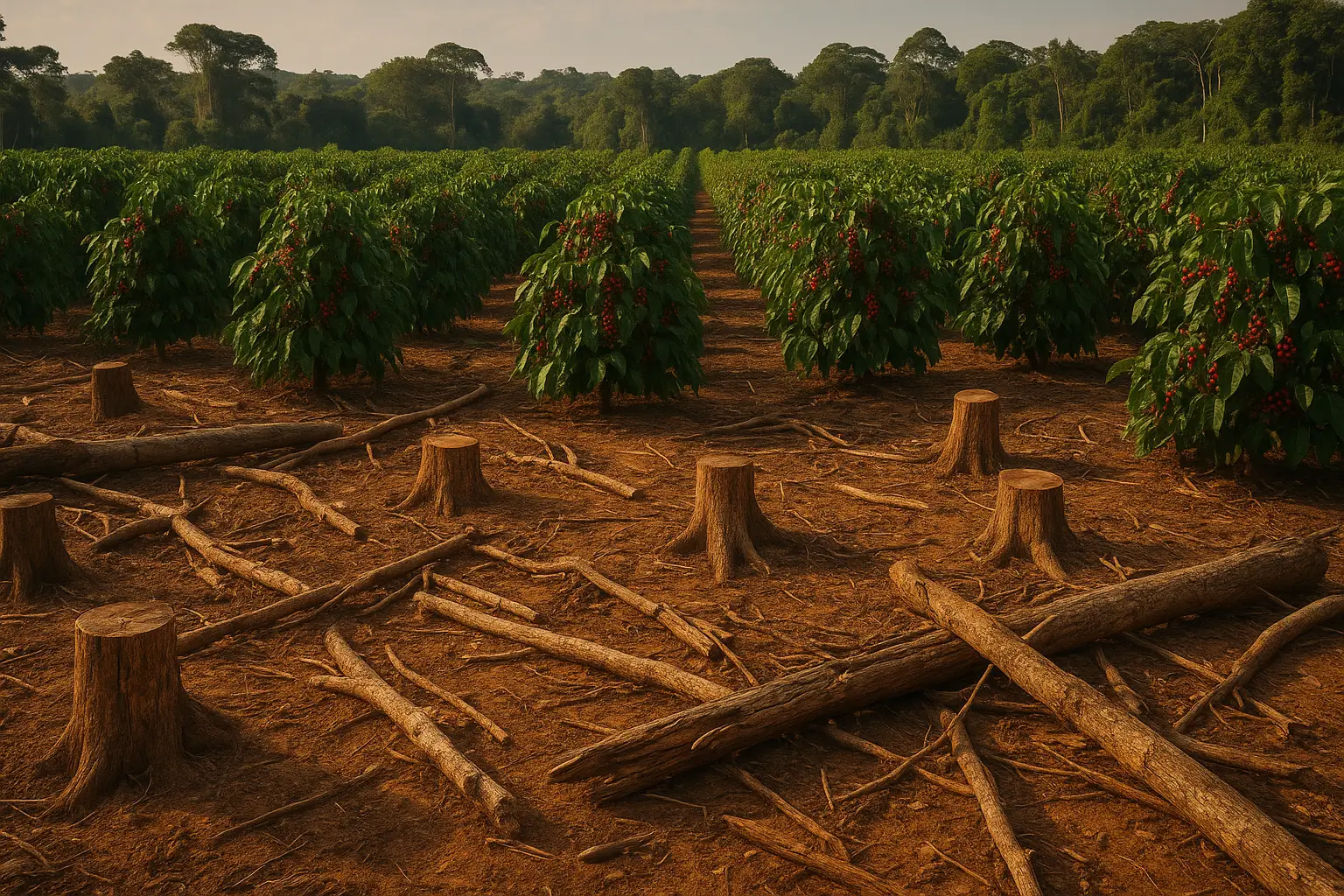Coffee is one of the most beloved beverages in the world, but its journey from farm to cup has a significant environmental footprint. As demand for coffee continues to grow, so does concern about how its cultivation and processing affect ecosystems, water resources, and global sustainability. In this article, we’ll examine the environmental impact of coffee production, from deforestation and water use to carbon emissions—and explore what consumers and producers can do to reduce harm.
The Global Scale of Coffee Production
Coffee is grown in over 70 countries, with more than 12 million farms worldwide. The majority of these are smallholder farms, but the industrialization of coffee farming—especially in countries like Brazil and Vietnam—has increased yields at a high environmental cost.
Major coffee-producing regions:
- Latin America (Brazil, Colombia, Honduras)
- Africa (Ethiopia, Uganda)
- Southeast Asia (Vietnam, Indonesia)
With global consumption exceeding 2 billion cups per day, the ecological footprint of coffee is vast and growing.
Deforestation and Habitat Loss
One of the most severe environmental consequences of large-scale coffee farming is deforestation. Traditional coffee was once grown under the shade of native trees, which preserved forest biodiversity. However, the shift to sun-grown coffee for higher yields has led to massive tree removal.
Consequences:
- Loss of biodiversity (including birds, insects, and native plants)
- Disruption of ecosystems
- Increased soil erosion and vulnerability to climate change
- Greater use of pesticides and fertilizers, which harms nearby habitats
Deforestation for coffee farming is particularly concerning in tropical rainforests, where biodiversity is most at risk.
Water Usage and Pollution
Producing coffee is water-intensive—not just for growing plants but also during post-harvest processing, especially in wet (washed) methods.
Estimated water use:
- 140 liters of water are used to produce just one cup of coffee.
Environmental risks:
- Discharge of wastewater from washing stations into rivers and streams
- Contamination from pesticides and fertilizers leaching into groundwater
- Depletion of local water resources in already dry regions
Without proper management, coffee production can severely stress local water supplies and ecosystems.
Chemical Use: Pesticides and Fertilizers
To meet global demand, many farms rely on chemical inputs to boost productivity. This includes synthetic fertilizers, herbicides, and pesticides, which can lead to:
- Soil degradation and nutrient depletion
- Water pollution from runoff
- Toxic exposure for farm workers and surrounding communities
- Harm to pollinators like bees and butterflies
Organic and regenerative farming methods are gaining popularity, but they remain in the minority globally.
Carbon Footprint and Climate Change
Coffee production contributes to greenhouse gas emissions at multiple stages:
- Land clearing and deforestation release stored carbon
- Fertilizer application emits nitrous oxide, a potent greenhouse gas
- Transportation and roasting add to fossil fuel emissions
- Packaging waste, especially with single-use pods or plastics
Ironically, while coffee contributes to climate change, it is also highly vulnerable to it. Rising temperatures, unpredictable rainfall, and increased pests threaten global coffee yields and quality.
Waste and Packaging Impact
Modern coffee consumption generates significant waste:
- Single-use pods and capsules (e.g., Nespresso-style)
- Disposable cups and stirrers
- Plastic and foil-lined packaging that is not recyclable
- Leftover coffee grounds often thrown into landfills rather than composted
Sustainable packaging and compostable options exist but are not yet widespread.
Sustainable Coffee: Solutions and Certifications
Despite the challenges, many organizations and farmers are working toward more sustainable coffee practices.
Key certifications to look for:
- Rainforest Alliance
- Fair Trade
- USDA Organic
- Bird-Friendly (from the Smithsonian Migratory Bird Center)
- Carbon-neutral certified brands
These certifications focus on environmental stewardship, fair labor, and conservation.
Sustainable farming practices:
- Agroforestry (growing coffee under shade trees)
- Organic composting to enrich soil naturally
- Water treatment systems at processing stations
- Crop rotation and intercropping to protect soil health
- Selective harvesting to reduce waste
What Consumers Can Do
As a coffee drinker, you have the power to make choices that support the environment.
Practical steps:
- Buy from certified sustainable brands
- Support local roasters that prioritize traceability and ethics
- Choose reusable coffee filters, cups, and accessories
- Compost your coffee grounds at home
- Avoid single-use pods and plastic packaging
Even small daily decisions can add up when millions of consumers shift behavior.
The Road Ahead: Responsible Brewing
While coffee’s popularity is unlikely to fade, its sustainability will depend on collaboration between farmers, governments, industry leaders, and consumers. Innovations in regenerative agriculture, eco-friendly packaging, and carbon-neutral production are steps in the right direction.
Brewing with a Conscience
Enjoying a cup of coffee doesn’t have to come at the planet’s expense. By understanding the environmental cost of coffee and making informed choices, we can help ensure that coffee continues to be a joy for generations to come—without sacrificing our forests, water, or climate in the process.
